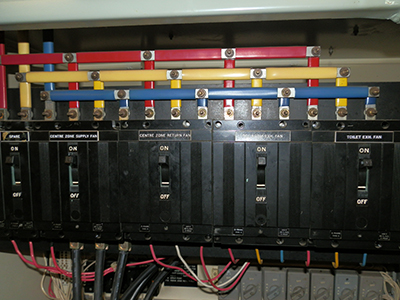Commercial Tenancy Fit Out | What Happens Behind the Scenes?
Sometimes a project is completed seamlessly, without fuss, in a timely manner, and without dispute. So how does this happen?
Commercial Tenancy Fit Out | The Tenancy Access
During a Commercial Tenancy Fit Out, making arrangements with tenants via the facility or building manager is  typically very easy. However, when a trade or builder will literally just “breaking in” to the tenancy to get started will and has caused unnecessary drama.
typically very easy. However, when a trade or builder will literally just “breaking in” to the tenancy to get started will and has caused unnecessary drama.
Typically a tenancy break-in will often set off an alarm. The whole situation will denigrate the relationship between all parties for moving forward for future access. Don’t break in just because you can.
Noise
There are noise limitations in buildings, especially when drilling into the concrete structure, as the building will act like one huge conductor of sound. The tenants on the ground or mezzanine can hear your drilling when you’re on the 7th floor!
Keep within the allowed times; tenants are well aware of these times; noisy works are typically allowed before 8;30am and after 5:30 pm. The building manager can refuse the tenant and let you get your work completed in these hours except in special circumstances.
Fire System isolation
The Project requires hot works, so the fire system is isolated, this is common sense, but other works, which are not hot and don’t create smoke, can set off the smoke detectors and call the fire brigade (circa $1500 per truck, two trucks minimum in the CBD).
Other works which can set off the fire smoke detectors include:
- Removing and relocating ceiling tiles
- Drilling desks which are made from “MDF”
- Lifting / removing old carpet
- Steam
- Concrete drilling
- activities which create dust………and there’s a lot
Tripping Circuit Breakers
There is nothing more frustrating for our tenants when they turn up to work

than electrical switches
or even during their daily work, and the lights are off. It’s an instant “must have fixed now!” situation. If the project team have had a couple of power tools in use, which are not entirely “serviceable”, or they have overloaded circuits with way too many adapters because they were too lazy to find alternative power outlets, then the result will nearly always be a tripped circuit breaker.
Notoriously, the sub-contractor will not put the effort in to source the “point of failure” and sort out the issue; instead, they will just find another outlet and leave the tripped one behind for Monday Morning. Don’t do this! Fix it or notify the building manager or tenant.
Water
A simple tap dripping into a sink, we can turn it off, and all is OK, but what if that same small leak is in the roof space, left behind because the system was not checked after the works were completed? This small leak does no harm for a few days, then, after a couple of days, there appears a small brown stain, about the size of a twenty-cent piece, on the ceiling tile. Then the brown stain gets bigger and bigger and bigger…… You can picture the scenario, and I’m sure you can picture a cranky tenant or even worse a soaked tile falling onto a desk……Let’s not go there!
Now What?
There is a lot to do and write about just on this topic alone; we’ll bring you more and look forward to your comments…And maybe a few laughs.
Nigel Wraight
Forte Asset Services




[…] the facility manager, “in the loop”. These contractors are more useful in managing a commercial building than a contractor which might be delivering a superior product or service. They deliver an […]
[…] Poor car park Supply and exhaust fan management […]
[…] it comes up in conversation with clients and vendors a like; for example, a vendor whom provides mechanical services was asked to provide our client with a preventative maintenance agreement for […]
[…] it comes up in conversation with clients and vendors a like; for example, a vendor whom provides mechanical services was asked to provide our client with a preventative maintenance agreement for […]
[…] the facility manager, “in the loop”. These contractors are more useful in managing a commercial building than a contractor which might be delivering a superior product or service. They deliver an […]